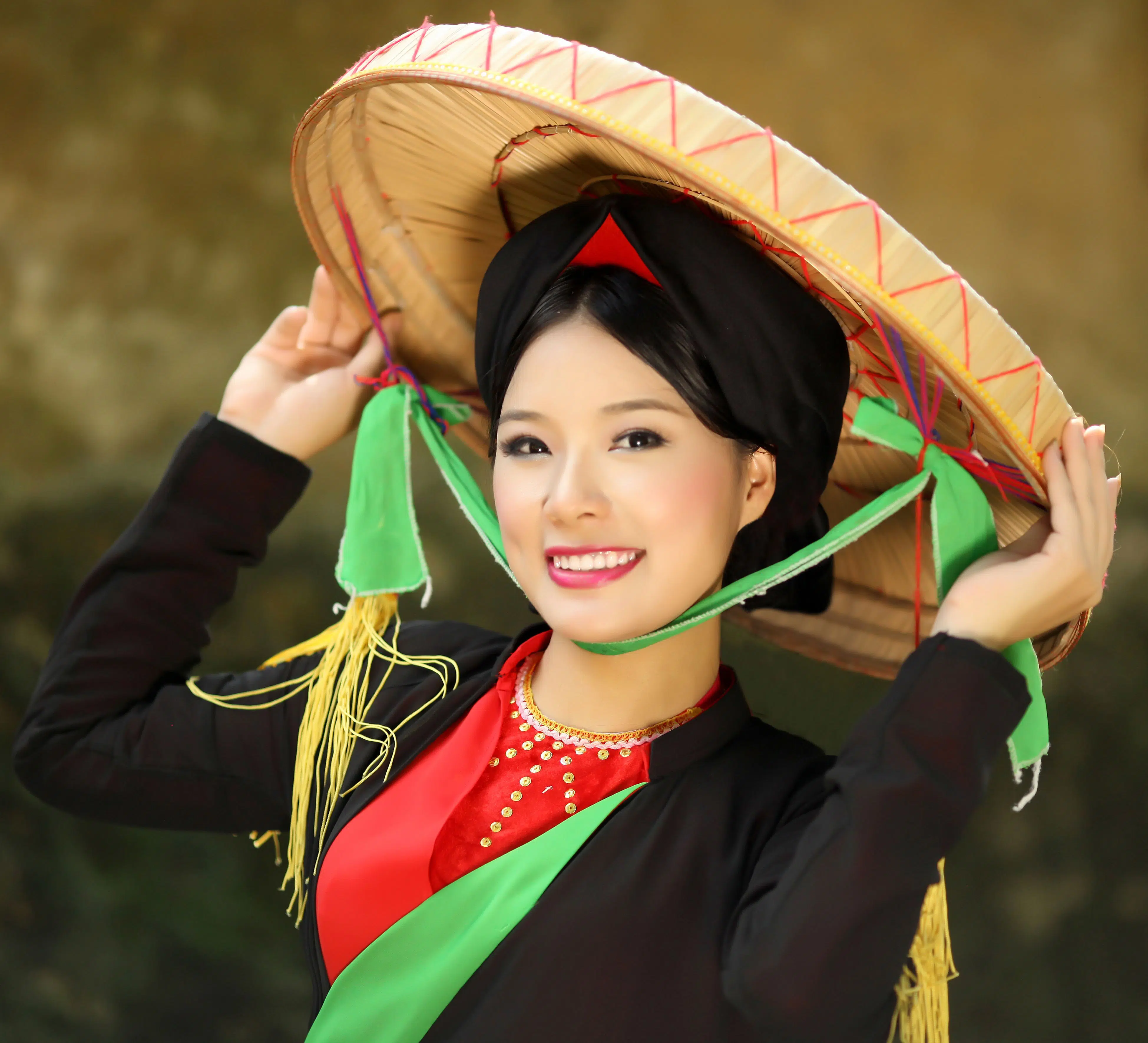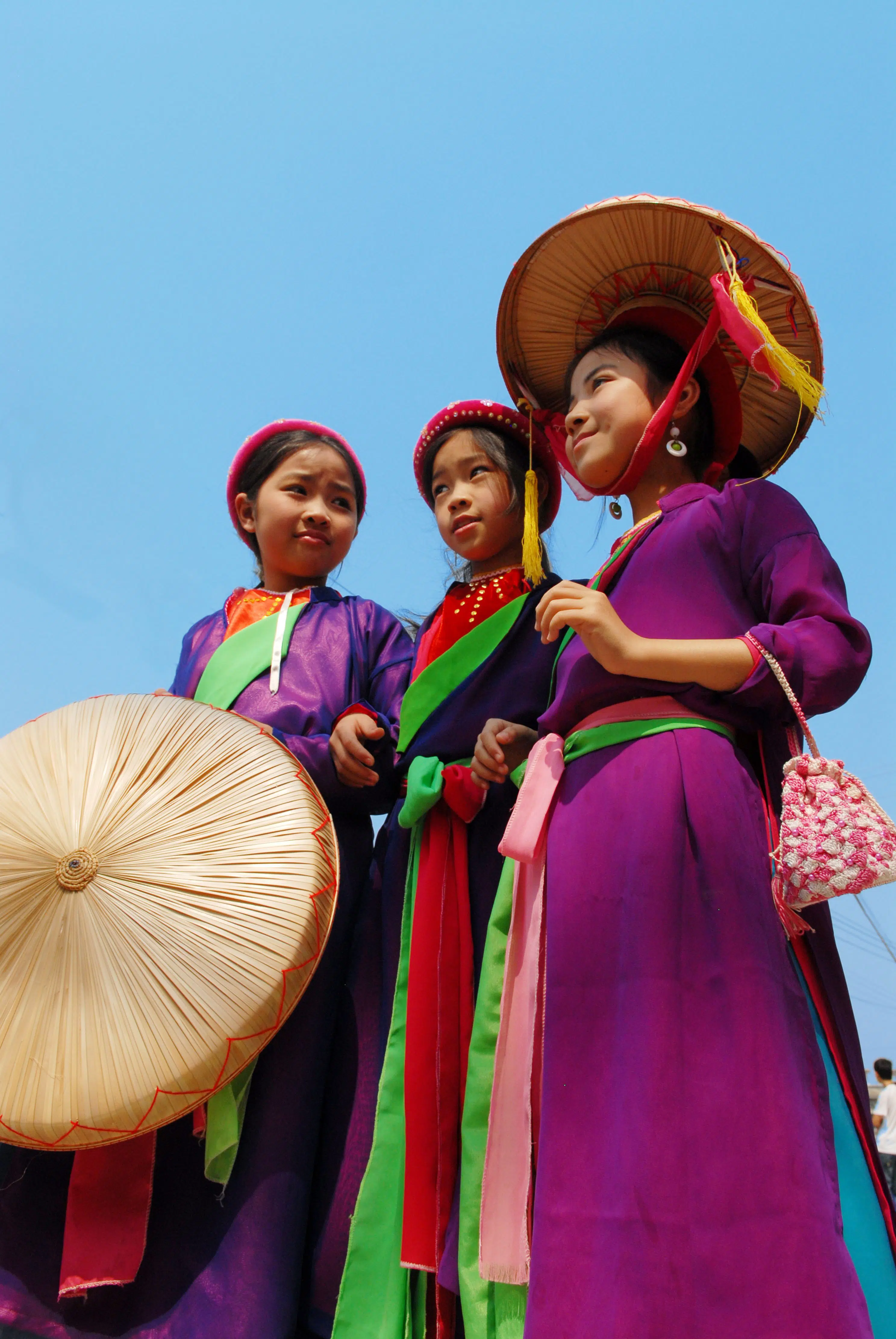Story: Tran Tan Vinh
Photos: Amachau, Tran Quy
Quan ho singers in colorful traditional outfits are a sign that spring has arrived in Vietnam.
This form of folk singing is native to Northern Vietnam and focuses on musical exchanges between male and female singers, often focusing on topics of love and sentimentality.

In addition to the musical elements, costumes are an essential part of a quan ho performance. Performers wear reserved and demure outfits, meant to express an inner beauty rather than create a flamboyant appearance. Female quan họ singers typically wear three- or seven-panel tunics as well as áo dài with five panels and buttons, generally in fabrics of taffeta and silk.

The outer coat is traditionally found in earthy tones of brown or black, while the inner dress comes in contrasting shades of lotus pink, azure, sapphire blue or yellow. The collar is not closed, but open to expose parts of the elaborately cut bodice that accentuates the wearer’s slender neck. Bodices are typically slit at the top, with a strap wrapping around the wearer’s waistline and tied in the front. A scarf is normally made of black silk with tassels at both ends to wrap around the waist, while the belt is a narrow piece of fabric, normally silk and dyed with bright colors such as red, orange or pink and tied in the front. The quan họ skirt is made of silk and hangs loosely to the knees.
The other integral costume items are the crow-beaked headscarf and the flat palm hat. Flat palm hats are not just decorative but are worn by female singers as shelter from rain and sun and also to stave off the winds so that their voices sound pure and resonant all the time. The crow-beaked headscarf is elaborately wrapped so that the “beak” must tip in the center and the entire headscarf takes the shape of a black lotus in the front, adding another charming element to the costume. Female singers also wear curved slippers and a keychain.
The multilayered design of the costumes, well-conceived blending of colors, soft smooth silk and the graceful posture accentuated with the áo dài panels and the belt hanging loose in the front are some notable contributors to the recognizable look of the female quan họ singers.
Fashion enchantment and alluring quan họ singing are part of the essential cultural heritage of the North.










